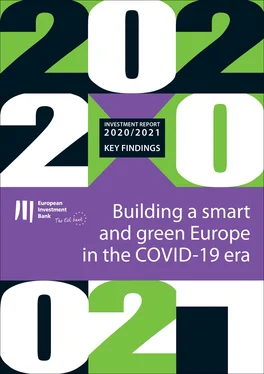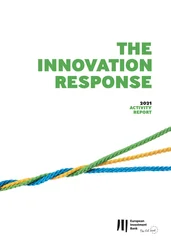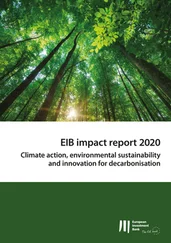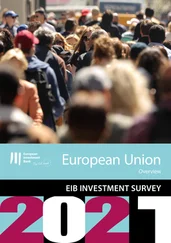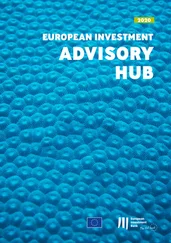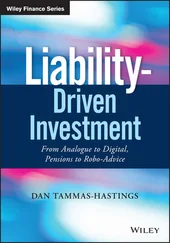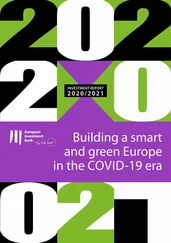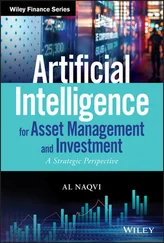EUROPEAN INVESTMENT BANK INVESTMENT REPORT
2020/2021
KEY FINDINGS
Building a smart
and green Europe
in the COVID-19 era

About the European Investment Bank
The European Investment Bank is the world’s biggest multilateral lender. The only bank owned by and representing the interests of the EU countries, the EIB finances Europe’s economic growth. Over six decades the Bank has backed start-ups like Skype and massive schemes like the Øresund Bridge linking Sweden and Denmark. Headquartered in Luxembourg, the EIB Group includes the European Investment Fund, a specialist financer of small and medium-sized enterprises.
About the Report
The EIB annual report on Investment and Investment Finance is a product of the EIB Economics Department, providing a comprehensive overview of the developments and drivers of investment and its finance in the European Union. It combines an analysis and understanding of key market trends and developments with a more in-depth thematic focus, which this year is devoted to European progress towards a smart and green future in a post-COVID-19 world. The report draws extensively on the results of the annual EIB Investment Survey (EIBIS) and the EIB Municipality Survey. It complements internal EIB analysis with contributions from leading experts in the field.
About the Economics Department of the EIB
The mission of the EIB Economics Department is to provide economic analyses and studies to support the Bank in its operations and in the definition of its positioning, strategy and policy. The Department, a team of 40 economists, is headed by Debora Revoltella, Director of Economics.
Main contributors to this year’s report
Report Director: Debora Revoltella
Report Coordinators and Reviewers: Pedro de Lima and Atanas Kolev
Key Findings
Tessa Bending
Disclaimer
The views expressed in this publication are those of the authors and do not necessarily reflect the position of the EIB.
The full version of the Investment Report 2020/2021: Building a smart and green Europe in the COVID-19 era can be downloaded at:

www.eib.org/investment-report-2020

Introduction Introduction Post-pandemic: Stagnation or transformation? Europe faces a choice. The recovery from the coronavirus pandemic provides a unique opportunity for transformation – the innovative retooling needed to thrive in the new, more digital world created by the pandemic, while also limiting climate change and preparing for its impact. It is an opportunity to set Europe firmly on a path to carbon neutrality by 2050 and shore up its global leadership in smart-green technology. It is an opportunity to repair the damage wrought by the pandemic and to strengthen social cohesion. Yet there is also a serious risk. The uncertainties and financial strains created by the pandemic could keep the EU economy from embarking on the necessary transformation. The dangers are numerous: massive public spending is too untargeted; Europe falls behind the new wave of digitalisation; it fails to make the transition fast enough; and it loses the advantages of its leadership in green technology. Failing to live up to these challenges means more than just a longer recovery. It means that Europe’s sustainability, competitiveness and prosperity might be impaired for decades to come. This report is about the investment needed to achieve the smart and green transformation of the European economy. It is about progress so far – the fallout from the pandemic and what is needed to get back on track. It examines the state of investment and investment finance for climate change mitigation and for the adoption of digital technologies. It looks at how Europe is positioned at the critical intersection of green and digital innovation, the role of investment by municipalities, and the risks and opportunities of the twin digital and green transition[1] for social cohesion. Throughout, the report examines the latest impact of the coronavirus pandemic and the urgent policy response needed.
Post-pandemic: Stagnation or transformation? Introduction Post-pandemic: Stagnation or transformation? Europe faces a choice. The recovery from the coronavirus pandemic provides a unique opportunity for transformation – the innovative retooling needed to thrive in the new, more digital world created by the pandemic, while also limiting climate change and preparing for its impact. It is an opportunity to set Europe firmly on a path to carbon neutrality by 2050 and shore up its global leadership in smart-green technology. It is an opportunity to repair the damage wrought by the pandemic and to strengthen social cohesion. Yet there is also a serious risk. The uncertainties and financial strains created by the pandemic could keep the EU economy from embarking on the necessary transformation. The dangers are numerous: massive public spending is too untargeted; Europe falls behind the new wave of digitalisation; it fails to make the transition fast enough; and it loses the advantages of its leadership in green technology. Failing to live up to these challenges means more than just a longer recovery. It means that Europe’s sustainability, competitiveness and prosperity might be impaired for decades to come. This report is about the investment needed to achieve the smart and green transformation of the European economy. It is about progress so far – the fallout from the pandemic and what is needed to get back on track. It examines the state of investment and investment finance for climate change mitigation and for the adoption of digital technologies. It looks at how Europe is positioned at the critical intersection of green and digital innovation, the role of investment by municipalities, and the risks and opportunities of the twin digital and green transition[1] for social cohesion. Throughout, the report examines the latest impact of the coronavirus pandemic and the urgent policy response needed.
Investing for the climate transition
Investing for digital transformation
The green-digital nexus: How is Europe positioned?
How has COVID-19 changed the economic landscape?
Action for a green, smart and cohesive Europe
Introduction
Post-pandemic: Stagnation or transformation?
Europe faces a choice. The recovery from the coronavirus pandemic provides a unique opportunity for transformation – the innovative retooling needed to thrive in the new, more digital world created by the pandemic, while also limiting climate change and preparing for its impact. It is an opportunity to set Europe firmly on a path to carbon neutrality by 2050 and shore up its global leadership in smart-green technology. It is an opportunity to repair the damage wrought by the pandemic and to strengthen social cohesion.
Yet there is also a serious risk. The uncertainties and financial strains created by the pandemic could keep the EU economy from embarking on the necessary transformation. The dangers are numerous: massive public spending is too untargeted; Europe falls behind the new wave of digitalisation; it fails to make the transition fast enough; and it loses the advantages of its leadership in green technology. Failing to live up to these challenges means more than just a longer recovery. It means that Europe’s sustainability, competitiveness and prosperity might be impaired for decades to come.
Читать дальше
